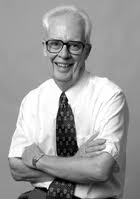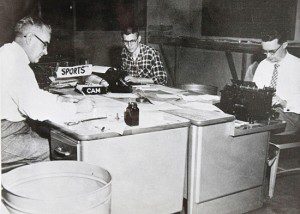
January was particularly cold in 1972, the year I arrived in Saskatoon. On average it was minus-30 that month. Nonetheless, that was the month I made an important career-altering phone call. For the previous three years I had worked feverishly as a student at Ryerson training myself to become a gainfully employed broadcaster. I had landed my first post-diploma job in Saskatoon, working in educational TV. But, to stretch my writing skills (and make a few extra bucks), I had also pitched a few ideas to the Saskatoon city newspaper, The Star-Phoenix.
“We’ll give you a try,” the pleasant voice on the other end of the phone said. “Cover the University of Saskatchewan appearance of Mitch Ryder. We’ll see how it goes.”
The voice belonged to the then entertainment editor of The Star-Phoenix, Ned Powers. When he and I spoke on the phone in 1972, Ned was 40 and already had two decades of writing experience behind him. I was 23 and had lots to learn about writing newspaper features. But as he said, he was willing to give me a try. As it turned out, Ned’s assignment for me to cover the U of S appearance of a rock ‘n’ roll legend was the beginning of a wonderful editor-reporter relationship.
“By 11 Saturday morning, clean-shaven William Levise was knocking on the seventh floor hotel room doors of his five band members… ‘I’ve had eight managers, one for every year I’ve been in the business,’ he said,” my story about Levise, a.k.a. Mitch Ryder and Detroit Wheels, began.
The 1960s rocker, who’d written such smash hits as “See See Rider” and “Devil with a Blue Dress,” had to pull his own band out of bed to get to the university gymnasium show in front of 2,000 screaming fans. But my story would never have been published, much less been given space on the front page of the entertainment section, if not for Ned Powers.

Coincidentally, Ned had been 23 too when he first came to Saskatoon in 1953 as a reporter for The Star-Phoenix. In those years, his beat wasn’t just entertainment, but sports and features of every type. His focus was always people, in particular the citizens of his home community. And Powers spoke in deed as well as word. Through the 1960s and ’70s, he volunteered much of his spare time for local baseball, curling and bowling groups. For a while he was director of the Saskatoon Sports Hall of Fame. He also devoted time to the Saskatoon Jazz Society and Children’s Choir. And late last month, CFQC TV and the City of Saskatoon named him citizen of the year.
“I really think I’m just a person who’s kind of gone to work every day and tried to do the best job you could do,” he told The Star Phoenix last week. “And if you can help other people along the way, that’s fine.”
Well, that’s the reason the Citizen of the Year for Saskatoon is in my column this week. Ned Powers helped this writer along the way. Soon after I arrived on the scene and began writing for him as entertainment editor at the paper, he helped me recognize that sometimes the most important entertainers weren’t the big names from out of town, but those struggling for a breakthrough right there in our own backyard. Soon I was writing about Saskatchewan-based artists such as blues band Jalal, Honkytonk pianist Harry Smith, and local folkies Humphrey and the Dump Trucks.
But my former editor and I had more than just a passion for words to tie us together. We both loved history, particularly Canadian Prairie history. During my first year in Saskatchewan, I would periodically travel up the road from Saskatoon to Batoche, location of the famous rebellion stand by Gabriel Dumont. Ned Powers often did the same. But Ned’s was more than a passing interest in the famous Rebellion of 1885; his grandfather, Fordyce Powers had actually served with one of the militia units that quelled the rebellion and captured one of its key leaders – Chief Big Bear.
My former editor, as I did, worked in television as well, but he often returned to the written word to deliver his most vivid stories of prairie people who made a difference. His three sports books and “Friends Revisited” column chronicled more than 600 local personalities who contributed to his community’s quality of life. But I offer my endorsement of Saskatoon’s choice for Citizen of the Year, because he gave me a chance, because he polished my earliest rough news feature copy into publishable prose, and because he taught me the value of writing in support of community. He also gave me a rather inspiring credit each time The Star-Phoenix published one of my stories.
“By Ted Barris… Special to The Star-Phoenix,” my byline read. Forty years later, I’m still flattered by it.
I’ve searched ALOT + CUD FIND NO MENTION of Billy Levise+ the band being in Saskatoon. Not a word – not included in any tour date info – I saw him then + kissed the hell out of him – and almost more. I was 13 + madly nuts about him. I can now prove he was there!!! THANK YOU ❣️